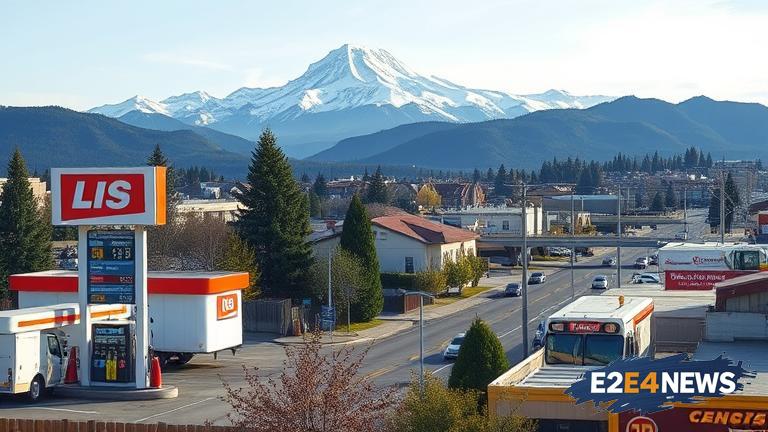The recent surge in gas prices has left many Washington state residents scrambling to make ends meet. With prices reaching over $5 per gallon in some areas, the financial strain is being felt across the board. According to experts, the main culprit behind the price hike is the global demand for oil, which has been on the rise due to increased economic activity. Additionally, the ongoing conflict in Ukraine has led to supply chain disruptions, further exacerbating the issue. Washington state’s gas tax, which is one of the highest in the nation, is also a contributing factor. The tax, which stands at 49.4 cents per gallon, is used to fund various transportation projects and infrastructure development. However, many residents feel that the tax is excessive and is unfairly burdening drivers. To make matters worse, the state’s gas prices are also influenced by the West Coast’s unique refining capacity, which is limited compared to other regions. This means that any disruptions to the refining process can have a significant impact on prices. In an effort to mitigate the effects of the price surge, some drivers are turning to alternative modes of transportation, such as carpooling or using public transport. Others are opting to drive more fuel-efficient vehicles or adjust their daily commutes to reduce their gas consumption. Meanwhile, state lawmakers are under pressure to provide relief to affected residents. Some have proposed measures such as suspending the gas tax or providing rebates to low-income households. However, these proposals are still in the early stages, and it remains to be seen whether they will come to fruition. In the meantime, drivers are advised to take steps to reduce their gas consumption, such as driving more efficiently, maintaining their vehicles, and planning their routes carefully. The impact of the gas price surge is not limited to individual residents; it also has broader economic implications. Higher gas prices can lead to increased costs for businesses, which can then be passed on to consumers. This can have a ripple effect throughout the economy, leading to higher prices for goods and services. Furthermore, the gas price surge can also have environmental implications, as higher prices may lead to increased demand for alternative energy sources. As the situation continues to unfold, residents and lawmakers alike are eagerly awaiting a solution to the gas price crisis. In the short term, drivers can expect to see continued volatility in gas prices, with some experts predicting that prices may reach $6 per gallon or more. However, in the long term, there are hopes that the development of alternative energy sources and increased investment in transportation infrastructure may help to alleviate the issue. The gas price surge has also sparked a wider debate about the need for sustainable energy solutions and the importance of reducing dependence on fossil fuels. As the world continues to grapple with the challenges of climate change, the gas price crisis in Washington state serves as a stark reminder of the need for urgent action. In conclusion, the gas price surge in Washington state is a complex issue with far-reaching implications. While there are no easy solutions, it is clear that a multifaceted approach is needed to address the issue. By promoting sustainable energy solutions, investing in transportation infrastructure, and providing relief to affected residents, it is possible to mitigate the effects of the gas price surge and create a more sustainable future for all.
